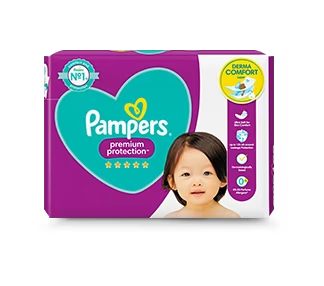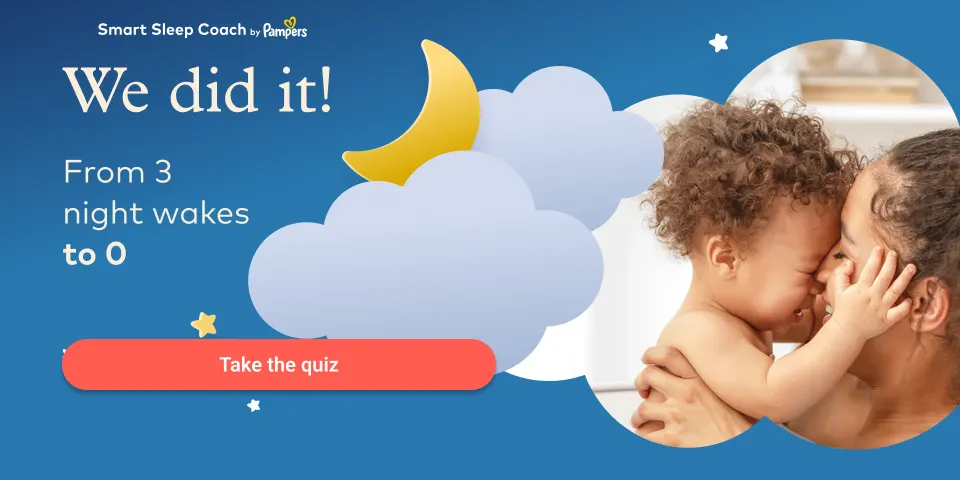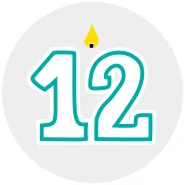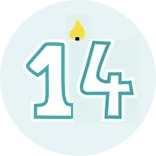13-Month-Old: Welcome to Toddlerhood!
At 13 months old, your baby has now officially entered the toddler phase! He or she is likely on the go more and more: possibly crawling, cruising or even taking those first thrilling steps. Learn more about what may be in store for your 13-month-old, including some of the development milestones that your child might reach this month or sometime soon. You’ll also find a typical sleep schedule, toddler food menu suggestions and more right here.
Toddler Development Milestones
Here are some of the milestones your toddler might reach at around 13 months. Keep in mind that the pace of development is different for each toddler, so you might have to wait a little longer for some, while others could already have happened:
Growth and Physical Development: Teething
At one year and a month, teething woes are probably something you’ve already experienced. In the second year, however, you’re likely to see some of the bigger, back teeth – known as molars – erupting. Because of their larger size, these chewing teeth might cause more intense teething symptoms from time to time.
Your child’s teething timeline is impossible to predict precisely, but on average the first molars start peeking through sometime between 12 and 16 months.
Emotional Development: Separation Anxiety
It's not unusual for a 13-month-old to make a fuss or even start crying or screaming when you leave him or her. One strategy that may help reduce separation anxiety is to practice short separations at first. Ask a trusted friend or relative to look after your toddler while you run an errand or pop out to the shops.
Say you’ll be back soon and give your toddler a quick kiss before leaving. Don’t sneak off – this could make your toddler more fearful that you could disappear at any time.
However anxious you’re feeling yourself, try and leave with a smile and a wave. Once you return, give your toddler plenty of attention and – eventually – he or she will learn that you always come back.
Movement: Toddling and Other Activities
If your toddler hasn’t already started toddling at 13 months old, it may not be long before your child takes those first tentative steps.
Learning to walk doesn't happen all at once, so be prepared for lots of stops and starts and falls before your child masters this important development milestone. In time, your toddler will become more skilled and confident.
Here are some more things your toddler may be able to do at around 13 months old:
Hold things between the thumb and forefinger (known as the ‘pincer grasp’)
Put objects into a container and take them out
Find items that you’ve hidden
Point at objects or pictures in a book when you name them.
How to Support Your 13-Month-Old’s Development
These are some steps you can take to support your 13-month-old’s development:
Boost coordination with two-handed activities. Help your child develop those all-important coordination and fine motor skills by encouraging him or her to try tasks that need two hands, with each doing a different movement. For example, unscrewing bottle tops or holding a mixing bowl and stirring. Why not make a cake together to give your toddler a chance to practice these skills? At 13 months old, activities like this can also help your toddler find his or her dominant hand. However, it might not be until around 3 or 4 years old that you’ll know for certain whether your child is going to be left or right-handed.
Give your mobile toddler space to play. The more your toddler can move about, the easier it is to learn the skills needed to get around. Make sure there are no hazards or dangerous objects within reach. Toys that you push or pull along can help improve your child’s balance. Big soft balls can be rolled, thrown or kicked and get your child moving in all kinds of ways.
Talk to your toddler. Your 13-month-old may not be talking much yet, but your toddler is learning to understand more and more words. Help to grow that vocabulary by pointing to different objects, shapes, colours or body parts and naming them.
Mealtimes for Your 13-Month-Old Toddler
Your child is still getting the hang of drinking from a cup and eating independently, either with a spoon or fingers. Mealtime messes and spills are part of the learning process and sometimes part of the fun for your toddler.
By now your child is probably eating three meals and up to two healthy snacks a day.
To ensure your little one gets a healthy, balanced diet, aim for your 13-month-old’s food menu for the day to include at least:
4 servings of starchy food, like bread, potatoes, pasta or rice
4 servings of fruit and vegetables
350 millilitres of whole milk or 2 servings of other kinds of dairy products like yoghurt or cheese
1 serving of protein from animal-based sources (like meat, fish and eggs), or 2 servings from vegetable sources (such as beans or lentils)
up to 2 healthy, unsalted and sugar-free snacks such as fresh fruits, cooked or raw vegetables, sticks of cheese or plain (pasteurised) full-fat yoghurt.
For more ideas on what to serve up for your 13-month-old, see our infographic below or check out some of these healthy lunch ideas for toddlers.

What Size Portions Should a 13-month-old Eat?
Serve up child-sized portions to avoid overfeeding your toddler. How big is a child-size portion? Well, there are no ‘one-size-fits-all’ rule about how much your child needs to eat. Experts advise playing it by ear and using your own judgement:
Start with small helpings at first and encourage your child to ask for more if he or she is still hungry
Don’t insist that your toddler eat everything on the plate or eat when he or she doesn’t want to
Don’t serve your toddler’s food up on adult-sized plates as big plates encourage children to eat bigger portions
Do your best to have set mealtimes and encouraging your toddler to eat slowly. Using mealtimes as an opportunity to talk about what’s happened during the day is a great way of doing this.
Talk to your health visitor or doctor if you’re worried about your child’s weight.
Can You Breastfeed Your 13-month-old?
It’s OK to keep breastfeeding your toddler for as long as it suits you both after weaning your child onto solid food. At 13 months old, breast milk won’t be your child’s main source of nutrition, and he or she will gradually take less and less milk at feeds, to leave room for more food.
After 12 months your toddler doesn’t need infant formula, and experts don’t recommend switching to ‘toddler milks’, ‘growing up milks’ or ‘goodnight milks’ either. At 13 months old, your child also needs to drink (whole) cow’s milk, or milk alternatives like soya, oat or almond (but not rice) drinks.
With cow’s milk now on the menu (as well as a greater range of solid foods) you might notice changes in your toddler’s poo at 13 months old. This is normal, but if your little one gets diarrhoea or constipation (or if you’re worried about the contents of her nappies for any other reason), check in with your doctor or health visitor.
How Much Sleep Does a 13-Month-Old Toddler Need?
In total, at this age your toddler probably sleeps on average about 12 to 15 hours a day, with 1 or 2 naps during the daytime.
Keep in mind that there’s no universal sleep and nap schedule that suits every 13-month-old. Some children this age may have 1 or 2 naps totalling 2 to 2.5 hours, while others may sleep less at night and make it up with more napping in the daytime.
If your 13-month-old wakes up crying or screaming in the night, it might be teething pain as the large back teeth start to break through. Other reasons for disturbed sleep could include separation anxiety or illness.
Having a regular bedtime routine – with evening rituals like a relaxing bath followed by a bedtime story and a goodnight kiss and cuddle – is one way of helping your toddler get a good night’s sleep.
If your child is having trouble dropping off or staying asleep, try some of these sleep training techniques or ask your health visitor or doctor for personalised advice.
A Day in the Life of Your Toddler
Now that you have a toddler on your hands, here’s a look at what a day in your home might look like:
Your Toddler’s Health: Establish a Healthy Lifestyle Early
As your toddler starts to eat a greater variety of foods and have more control over his or her activities and choices, it’s a great idea to establish healthy habits nice and early. Here are just some ways you can start to establish healthy habits for your 13-month-old:
Facilitate an average of 180 minutes of physical activity a day. This might sound like a lot, but don’t worry – it doesn’t mean you have to put your toddler through a single three-hour session of gruelling exercise! Spread smaller periods of activity through the day. Energetic play like running, skipping and jumping is great, but it’s OK to have some light activity in the mix too. Light activities could include just standing up, walking around, playing and exploring.
Avoid giving sugary snacks or drinks between meals. Healthier options include unsweetened rice cakes, cheese cubes, hummus with vegetable sticks, or slices of fruit.
Set a good example by eating nutritious, healthy foods and staying physically active yourself.
Avoid using food as a reward. Instead, reinforce good behaviour with lots of praise and/or a hug and a kiss.
FAQs at a Glance
Toddlers develop at different rates, so your child may not have reached all these milestones, but at or around 13 months old your toddler may be able to:
• Stand up and walk independently or while holding onto furniture (cruising)
• Use the ‘pincer grasp’ to hold things between the thumb and forefinger
• Put things into a container and take them out
• Find objects that you’ve hidden
• Point at the right picture in a book if you name it.
Your Life as a Parent: Being Vigilant
With each developmental milestone your 13-month-old reaches, he or she is becoming more independent and curious about the world. At this stage, however, your toddler can’t yet understand your instructions about what is safe and unsafe, right and wrong.
This means a big part of your role is being vigilant to make sure your little one stays safe. Child proofing your home so that your child can explore safely will help encourage mobility and independence while also giving you peace of mind.
Putting safety covers on electrical outlets, adding corner guards to the coffee table, securing furniture, and blocking stairs and doorways with baby gates are all things you can do to create a safe environment for your 13-month-old to explore and practice crawling, cruising and walking around in.
Being ever-watchful and anticipating your 13-month-old’s next move can be tiring sometimes, and even in a child-proofed house you’ll need to keep an eye on your little explorer – but it can help to remind yourself that giving your toddler a safe environment to play in is not just about preventing accidents, it’s also important for happy and healthy development.
Checklist for This Month
Childproof your garden. If you have a garden, your budding adventurer will probably love playing outdoors in the coming years, so now is a great time to childproof the garden too. Make sure you have a fence that barricades access to the driveway, street and other gardens. Keep large toys and play equipment away from the washing line, so your toddler can’t reach it by standing on them – washing lines can become a strangulation risk. Check that your garden has no poisonous plants growing in it. If you have a pond or pool in your garden, make sure it’s completely safely fenced off.
Review the guidelines for items like the car seat, pushchair and cot. Car seats, pushchairs, slings and many other items of baby gear have size and weight limits, and the cot mattress may need to be lowered at some point as your child grows to make sure he or she can’t fall out. Now is a great time to take another look at these guidelines. In some cases, you may need to upgrade some of your baby gear. For example, depending on the model of car seat you have, it may be time to think about upgrading to a toddler car seat. On the other hand, it may just be a case of adjusting a setting on the product to ensure it’s still safe for your toddler.
Assemble or update your child’s first aid kit. No matter how vigilant you are, accidents can always happen so it’s good to have a baby first-aid kit on hand, with sticking plasters, disinfectant and everything else you need for treating those minor bumps, scrapes and illnesses. If you’ve already got a first-aid kit, now might be a good time to check it and replace any missing or out-of-date items.
For more information like this, sign up to get our regular emails:
13 month old baby - checklist
The information in this article is based on the expert advice found in trusted medical and government sources, such as the National Health Service (NHS). The content on this page should not replace professional medical advice. Always consult medical professionals for full diagnosis and treatment.






